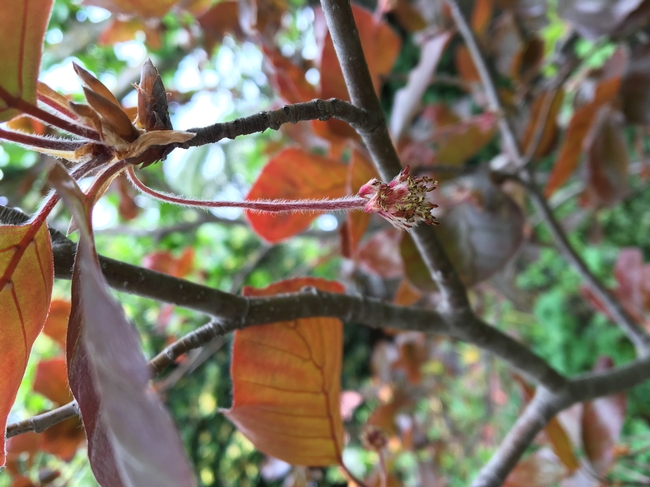Pubescence: soft down or fine short hairs on the leaves and stems of plants. Many plants have pubescence designed to provide a tiny bit of shade to reduce the temperature of the leaves and stems and protect the leaves from losing too much water from transpiration. This evolutionary miracle has allowed many plants to develop a tolerance for high heat, relentless sunshine, and limited water.
Some plants have the hairs on every surface of the plant, e.g. lamb's ear. Some plants limit the hairs to the underside of leaves and new stem growth, e.g. live oaks. These plants often have a leathery, waxy topside to the leaves with the pubescence on the underside protecting the stoma from releasing too much water. New stem growth gradually loses the tender, hairy protection, replacing it with bark.
The Demonstration Garden at the Ag Center has many examples of plants with both prominent and subtle pubescence. Some are evident from a distance: the ruddy colored hairs on the back of magnolia leaves, while others require close inspection: the interior live oak in the driveway courtyard shows pubescence on the stems of the new branch growth. Pet the lamb's ear, lavender, milkweed and Phlomis for a soothing tactile experience.
This term is also used to describe short hairs or the downy covering in animals, especially insects, and reaching puberty in humans, with pronounced hair growth.
